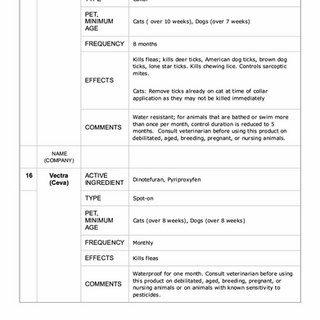Fleas - Nasty Little Buggers!
So, I wanted to talk to you about fleas this week, but before I start, I wanted to tell y’all my good news. I know I have told you that I love goats. My kids show Boer goats, and we have been building our breeding herd so that we can breed certain traits, including temperament, into our goats. We bought a beautiful doe named Fergie this spring, and she is a big boned, long bodied, straight topline gal with an easygoing, loving disposition. When we got her, she was supposedly open (not bred). To our wonderful surprise, she gave us a beautiful little doe this week! Yea Fergie!!! If you have name ideas, send me an email.

Back to the nasty little buggers – Fleas aren’t just a nuisance. THEY CAN KILL! Fleas suck blood, and they can cause a severe anemia, especially in young puppies and kittens with high flea burdens.

FLEAS CAN CAUSE SERIOUS SKIN PROBLEMS! The most common cause of pruritus (itching) in dogs and cats is fleas. Animals that are hypersensitive to the flea saliva are not only itchy, but they can develop hair loss, crusty lesions, or excoriations that range from mild to severe.

FLEAS CAN TRANSMIT PARASITES! Fleas can transmit the tapeworm, Dipylidium caninum, which can steal nutrients from our pets and cause anal itching. As the pet owner, you will notice the proglottids (babies) near the rectum, and they look like grains of rice. Yuck!
FLEAS CAN ALSO TRANSMIT INFECTIOUS DISEASE! The bacteria Bartonella henselae can be transmitted by fleas, and this organism is responsible for cat scratch fever. This bacteria can affect dogs, cats, and people. Fleas can transmit Yersinia pestis (plague), Rickettsia spp. (Rocky Mountain spotted fever), and Mycoplasma spp. (another cause of anemia, especially in cats).

To understand how to get rid of fleas, you have to know a little about the life cycle. There are four stages in the flea life cycle. There are eggs, larvae, pupae, and adults. An adult female flea will begin producing eggs within 24-36 hours of a blood meal. She can produce 40-50 eggs per day, and she can produce for greater than 100 days. That’s a lot of flea eggs!

The eggs then drop off into the environment, and within 2-12 days, they develop into larvae. The larvae eat the blood-filled feces of the adult fleas, and they undergo 3 molts. At the third molt, they spin a cocoon, and the pupae live in the cocoon from 7 days to a year. Once conditions are right (warm and humid), the pupae emerge. The newly emerged fleas can live for 1-2 weeks without a blood meal, but as soon as they find a suitable host, they begin eating within minutes.
To control fleas, we first need to break the flea life cycle. This is accomplished most effectively by targeting the adult flea as well as the egg or larval flea forms. The second most important thing is to use year-round flea control. Fleas are able to adapt easily, and they thrive in our well-regulated home environments. They can live in the cracks of our hardwood floors as easily as in carpet fibers. You may not see them since our animals may lick, chew, and groom away the evidence of the infestation. Given a choice, fleas prefer our pets’ blood over ours. Third, we should consider rotating our flea products to decrease resistance.
There are multiple great flea control products, and I have included two charts to compare and contrast some of these products. Some products are only intended for use in dogs or cats although most can be used in both species. You will want to visit with your primary care veterinarian to determine which product is most appropriate for your pets.
Cat Flea Products
Dog Flea Products




























































